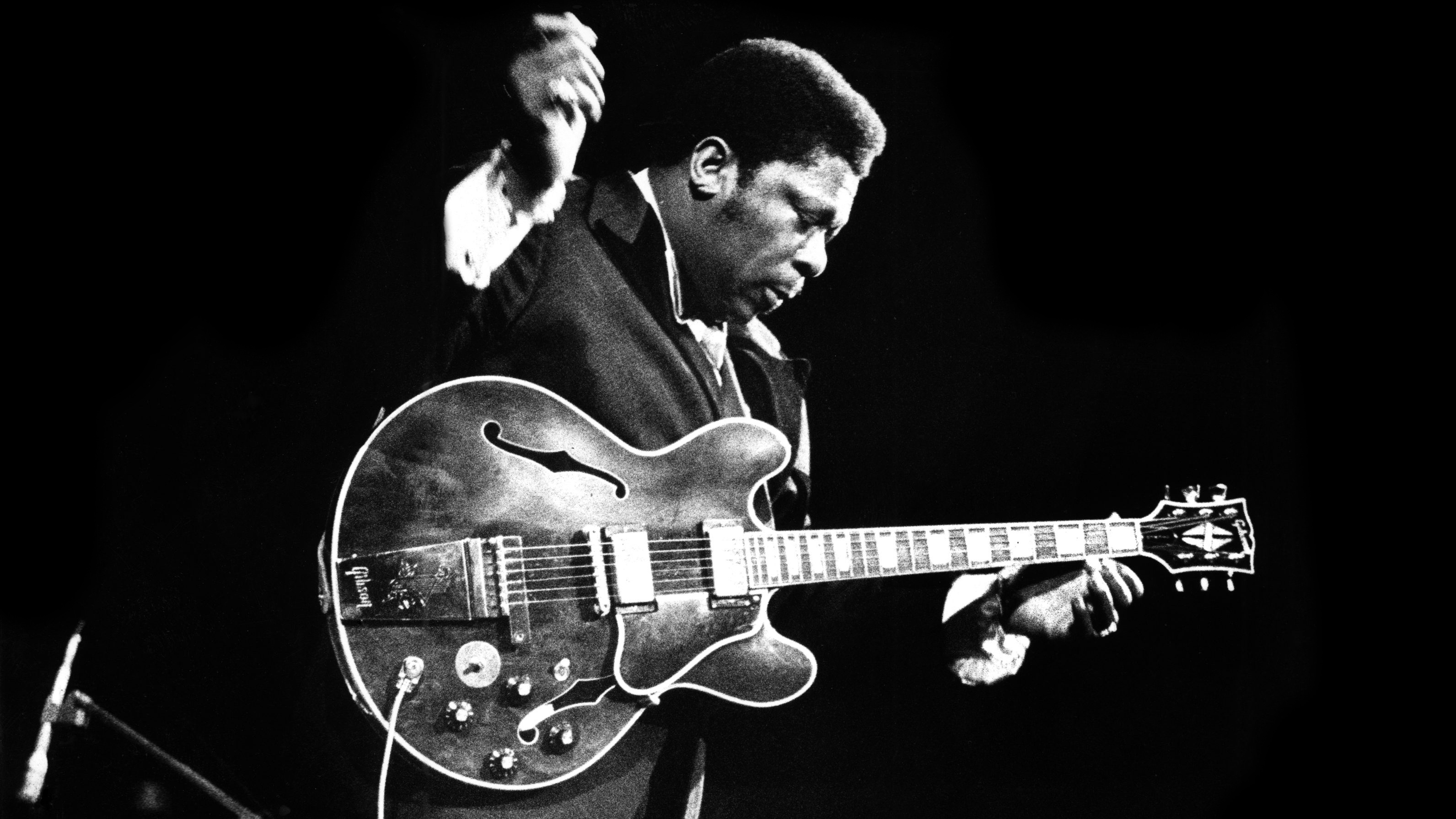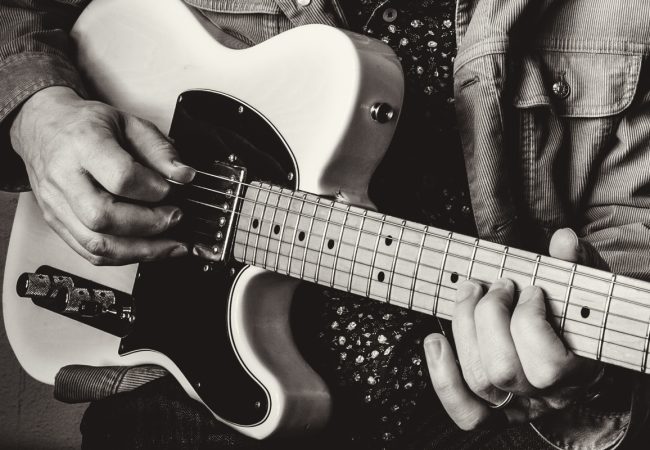Transitioning from blowing up and down pentatonic scales to purposely crafting your solos by taking the chord changes into account can be frustrating for guitarists. It’s also a blow to the ego as you basically have to suck it up, slow down, and really pay attention to the notes you’re playing. The blues is a great starting point for soloing over chord changes as, although you may not realize, you’re already doing it from day one; so, what I’d like to do here is make it more explicit and try to avoid some of that early frustration. If you’ve tried playing over changes without too much success, read on because you may be missing the point.
Thrill is Gone
The late, great B.B. King’s interpretation of, ‘The Thrill Is Gone’, is a great tune to start experimenting with soloing over chord changes. Why? It’s a slow minor blues with just a handful of changes; we can fall back on the minor pentatonic scale, and we don’t need to learn any new scales or patterns to be able to outline the chords.
Where Guitarists Go Wrong
Guitarists usually get frustrated trying to learn to solo over changes because they dive in at the deep end by trying to change between several scale or arpeggio patterns resulting in a solo that sounds forced and rushed as their attention shifts from all the good things about their soloing: rhythm, timing, tone etc. to trying to get to the next pattern and force it in there. In many ways, this mechanical approach to playing over changes actually misses the point of what we’re trying to achieve.
PLAYING THE Changes vs. PLAYING OVER Changes
There’s an interesting semantic difference between these two sets of words; in my head, at least. I would say that playing over changes is the more mechanical approach described above, while playing the changes takes into account the implications of changing from one specific chord to another, and how to take advantage of that.
Confused? Let me show you what I mean:
In ‘The Thrill Is Gone’, we have the following chords: Bm, Em, Gmaj7, F#7.
We can comfortably root ourselves in the B Minor Pentatonic Scale, which contains the notes: B, D, E, F#, and A, to improvise.
If we look at the notes involved in the first chord change, we have: Bm (B, D, F#) to Em (E, G, B), one of these notes is NOT in the B Minor Pentatonic Scale, so playing that note as the chord changes from Bm to Em will have the effect we’re looking for. In other words, when you sense the Em approaching, work your way towards landing on a G to really play the change.
Here’s how it looks on the fretboard:

You can meander in B Minor Pentatonic, then when the chord changes to Em, outline or play the change by landing on the G. This is whole lot more effective (at first) than changing from a Bm arpeggio/scale to an Em arpeggio/scale pattern.
Our next chord change is Bm to Gmaj7. If we apply the same process, this time we see that the notes in Gmaj7 (G, B, D, F#) have all already been played. We could aim for the G again, or highlight that F#, or land on the third (B); it’s up to you, but only deal with as much information as you can handle for now. A well-chosen note played at the right moment will have a far greater melodic effect than forcing a scale or arpeggio pattern in at this point.
Our next chord change is Gmaj7 (G, B, D, F#) to F#7 (F#, A#, C#, E).
There are two new notes here (A# and C#), which (probably) haven’t been played, so these can be used to great effect to play the change:

And/or:

For the F#7 to Bm chord change, simply fall back into the B Minor Pentatonic Scale.
So, by concentrating on targeting one or two notes when the chords change, we avoid the major headache of frantically changing scale/arpeggio patterns and losing all musicality. If you have less to remember, you can really concentrate on making this a musical exercise, rather than a mechanical one.
Try it out over the following backing track. Remember you can slow it down (try 0.75 in Settings > Speed) if you want to really home in on those changes.



